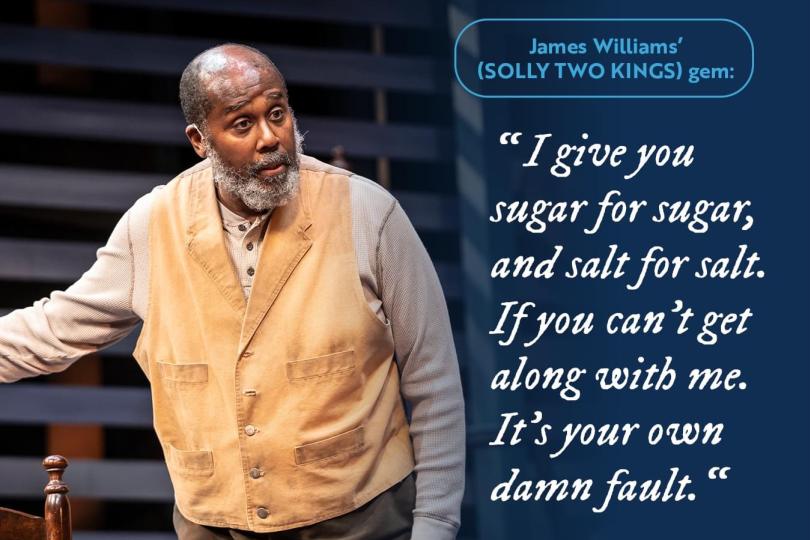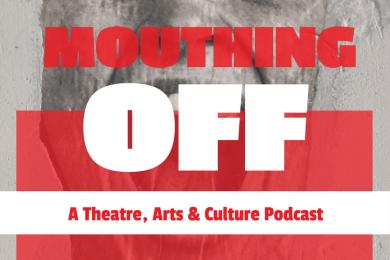Spotlight on James A. Williams, the titan

James A. Williams is a titan in the American Theater. He has worked nationally and internationally developing iconic roles in new work such as August Wilson’s American Century Cycle, and shaping new generations of theater makers through arts and education initiatives. Of all his accolades, and there are many, his continued commitment to new play development may be most admirable. Williams is a Minnesotan-bred thespian, who is currently starring in Marcus Gardley’s new adaptation of King Lear (Lear) at Cal Shakes. I had an opportunity to interview him in between tech rehearsals.
You are a first generation college graduate, correct? However, do you come from a creative family?
No, I’m not a first generation college grad. For years I thought I would be, but then I discovered I had aunts and uncles who had graduated from college. In fact my Uncle David was one of the first black players at the University of Michigan. My mother was enrolled in Lincoln University (MO) when she met and married my father. Both my grandparents were creatives. My grandmother was a seamstress and my grandfather was a chef. I was the first of my siblings to go to college.
What attracted you to begin a career in the theater?
While I was at Macalester, Steve Yoakam was casting his senior project and chose “No Place to Be Somebody” by Charles Gordone. He cast me and a couple of other names you may recognize, Jack Reuler, Faye Price and for veteran Twin City theater fans, Russell Curry. That summer Jack started Mixed Blood on the West Bank. I was a company member during the second season, where I met Lou Bellamy and Dr. Horace Bond. Lou asked me to be part of the inaugural company at Penumbra and I haven't looked back.
You’ve been working in the theater since the 70s, how has the theater scene evolved?
I have been witness to a miracle. Penumbra was just that. We went from being a community theater to a major force in American theater. We started out wanting to be Black Voices telling Black Stories for Black Audiences in a state where Black People were 2% of the population. Under Lou’s guidance we carved out a place in history. Later, other culturally specific theaters saw what we had accomplished and said if we could, they could too. Our style of acting, the Penumbra aesthetic, became a driving force across the country. Multiple company members landed on Broadway and in LORT Houses across the nation. And the writers, Carlyle Brown, Charles Smith, Laurie Carlos, Aisha Rahman, P.J. Gibson, Marion McClinton all developed works there. We had open rehearsals with a water fountain across from the theater, so when kids got thirsty and came in to get a drink they would stand in the doorway and watch. Some of those kids became company members years later.
Overall, Theater here has gotten safe. I know it’s hard to believe. In the 70’s and 80’s, the work was driven by the need to hear alternative voices and stories. Out and About, Up and Over, At the Foot of The Mountain, Palace Theater. We weren’t the Guthrie and we didn’t want to be. Plays started here and ventured out into the world. Now, playwrights come here for the grant money and can’t wait to leave. They never get to know us or what the community has to offer. Now, it’s about brands and maintaining subscription bases and getting that writing gig in LA or NYC.
So many theater artists move to the Twin Cities and never leave, how would you describe the MN theater community?
For the most part, we’re home grown. We may not be originally from here, but we grew up here. Grew up in the business that is. We know each other. Actors and producers are friends. Our kids go to school together, play sports together. My partner has taught dance classes to children of several Artistic Directors. We support each other.
When did you first meet August Wilson? What was your first impression of him and his work?
How does one react when they meet Shakespeare? Seriously, we were friends before he became famous. I knew his brothers better. We watched prize fights on television, and sometimes talked about art and theater.
Of the ten plays in Wilson’s American Century Cycle, which characters did you portray? Any favorites?
I’ve done all 10, several multiple times. My favorite characters today are in no specific order: Memphis Lee (Two Trains Running), Roosevelt Hicks (Radio Golf) & Troy Maxson (Fences). But my first Wilson role was Chauncey Riffraff in Black Bart and The Sacred Hills, his first professional production at Penumbra. I grew up with his language and rhythm on stage.
“Learning how to value stories different from your own is essential to personal growth.”
In 2012 you received the Distinguished Global Citizen Award from your alma mater Macalester College for working with youth in the theater nationally and abroad, do you believe that theater-arts is a pathway to social justice?
Theater teaches empathy and encourages us to see the world through a different lens. It gives value to your story and someone else’s, that’s a necessity to achieving justice. Those in power know it works. That’s why they send their kids to art, dance, and theater camps. That’s why representation means more than seeing black and brown bodies in reimagined Eurocentric stories. To have a chance at understanding each other you must have a working knowledge of my story, my history in my own words, thoughts, and perspective. The same way I’m forced to interact with yours. If not, you put the burden on me to educate you before we can even begin to have meaningful communication. Learning how to value stories different from your own is essential to personal growth.
What words of wisdom would you like to share with the next generation of theater makers?
In the words of Mr. Wilson: “You are entitled to the work, not its benefits.” I was taught the value of learning to develop my craft would lead to establishing a foothold in this business and for me, it has. At times I’ve had to leave my comfort zone but it’s been worthwhile.
What projects are you working on? What’s next?
I’m currently at Cal Shakes working on Marcus Gardley’s adaptation of King Lear. Then I’m doing a workshop reading of my one man script: A Walk in August in North Carolina in October. And in April I’ll be appearing in: Between Riverside and Crazy @ Park Square Theater.
Where can audiences follow you on social media?
I’m on Instagram & twitter: @jayydubb1954
Thank you.




